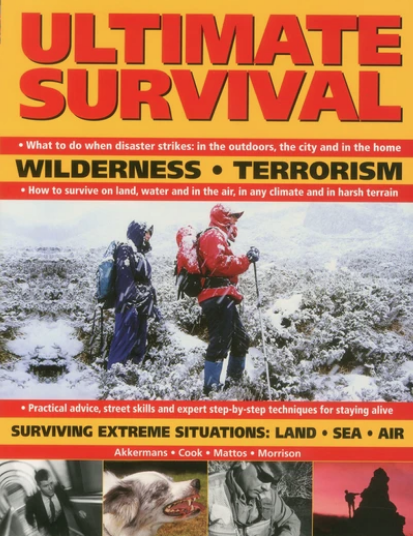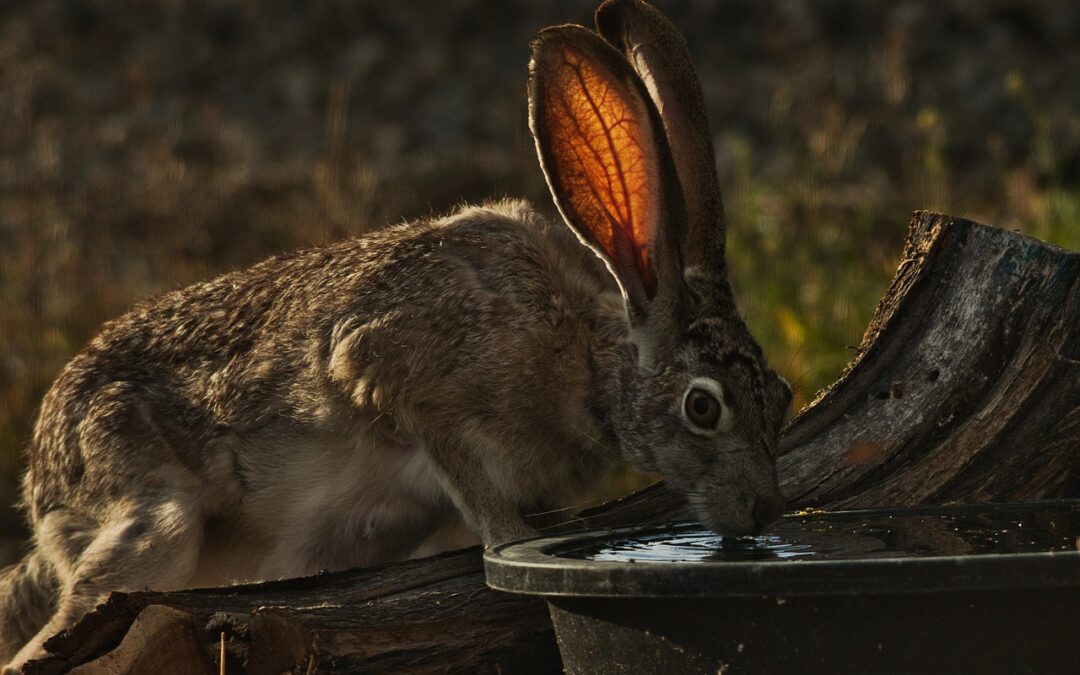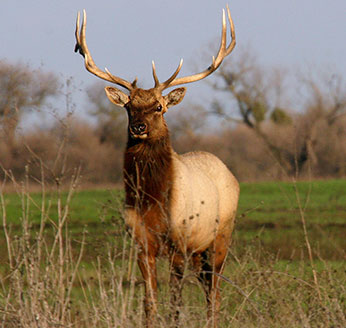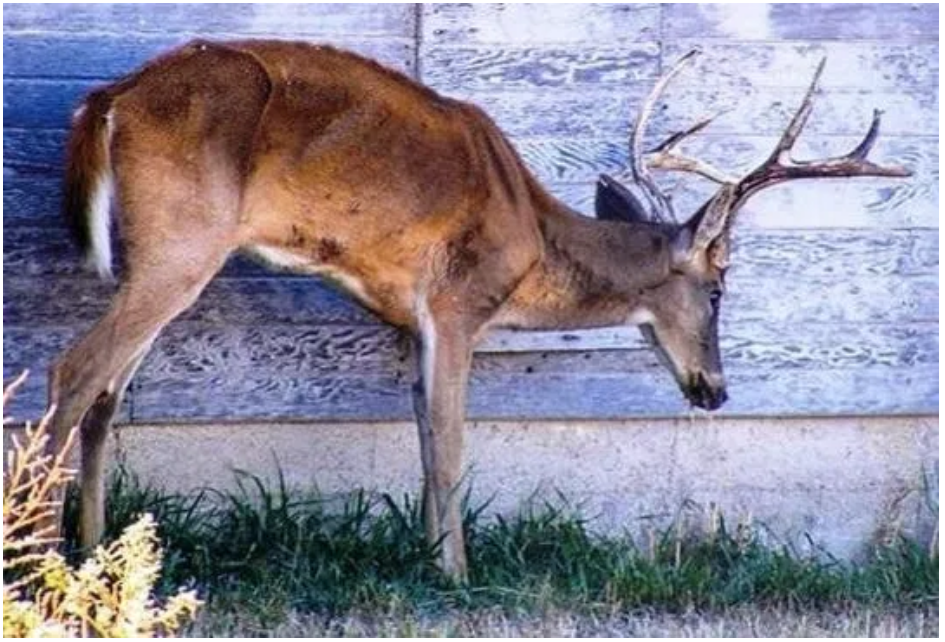CDFW diagnosed Rabbit Hemorrhagic Disease (RHD) in a black-tailed jackrabbit carcass submitted from private property near Palm Springs in early May.
The California Department of Fish and Wildlife (CDFW), in conjunction with the California Animal Health and Food Safety Lab, San Bernardino has diagnosed Rabbit Hemorrhagic Disease (RHD) in a black-tailed jackrabbit carcass submitted from private property near Palm Springs in early May. Samples submitted to the National Veterinary Services Laboratory in Plum Island, New York, confirmed the presence of the RHD virus type 2 (RHDV2) in California for the first time. This disease is highly contagious and often lethal to both wild and domestic rabbits. The carcass that was tested was one of about 10 dead jackrabbits observed on the Palm Springs property.
RHDV2 is a calicivirus that does not affect humans or domestic animals other than rabbits. At this time, no other California rabbit populations are known to be infected, but the disease has spread quickly in other states, prompting CDFW biologists to prepare for more reports in the coming months. A “quick facts” reference guide can be found on CDFW’s website.
Since March 2020, RHDV2 has caused mortalities of both wild and domestic rabbits in New Mexico, Colorado, Arizona, Texas and Mexico. Deaths of both wild rabbits and jackrabbits have occurred. Infected rabbits and jackrabbits may exhibit no symptoms leading up to their sudden death, or may suffer from fever, swelling, internal bleeding and liver necrosis. The range of susceptible species in North America is currently unknown, but all rabbit, jackrabbit, hare and pika species are likely susceptible.
CDFW Senior Wildlife Veterinarian Deana Clifford noted the introduction of RHDV2 to California could significantly impact wild rabbit populations, particularly those already at risk, such as the endangered riparian brush rabbit (Sylvilagus bachmani riparius) and those with limited distribution in the state, such as the pygmy rabbit (Brachylagus idahoensis).
“Unfortunately, we may also see impacts to species that depend on rabbits for food, as rabbits are a common prey species for many predators,” noted Dr. Clifford.
CDFW will carefully monitor the progression of RHDV2 in California, including investigating and testing rabbits found dead, monitoring populations of endangered rabbits and working with partners, including the U.S. Fish and Wildlife Service, the California Department of Food and Agriculture (CDFA) and the U.S. Department of Agriculture.
Public reports are an extremely helpful tool as wildlife veterinarians monitor the situation. CDFW is asking anyone who lives, works or recreates in wild rabbit habitat to report any sightings of sick or dead rabbits to CDFW’s Wildlife Investigations Laboratory. To report sightings of sick or dead wild rabbits, hares or pikas contact the CDFW Wildlife Investigations Lab at (916) 358-2790 or file an online mortality report through CDFW’s website.
Outdoor recreationists should take precaution when hiking, camping or backpacking and not handle or disturb carcasses to minimize the potential spread of RHDV2. Additionally, hunters should take precautions to prevent spreading the virus, such as wearing gloves when field dressing rabbits, washing hands and burying remains onsite so that scavengers cannot spread the virus. The virus is hardy and can remain viable on meat, fur, clothing and equipment for a very long time, making it easily transmissible to other areas.
In California, hunting season for brush rabbits and cottontails opens July 1 and runs through the last Sunday in January. The season is open statewide, except for a closed area in the Central Valley near the riparian brush rabbit range. Hunting season for jackrabbits is year-round and statewide.
A vaccine for RHDV2 is not currently available in the U.S., thus domestic rabbit owners should practice good biosecurity measures to protect their animals from this disease, such as washing hands before and after working with rabbits, not sharing equipment with other owners and keeping their rabbits isolated from wild or feral rabbits.
Domestic rabbit owners who have a sick rabbit should contact their veterinarian. If domestic rabbits are found dead, please contact the local CDFA Animal Health Branch.
 Written by experts, the first section covers bushcraft techniques for every climate and terrain: how to find food, water and shelter, navigate and make a fire. The second section helps you ensure personal safety when the everyday becomes life-threatening, including hostage situations, counter-terrorism, self-protection, road rage, fires and accidents. This manual will enhance your survival instinct, improve risk awareness and keep you alive.
Written by experts, the first section covers bushcraft techniques for every climate and terrain: how to find food, water and shelter, navigate and make a fire. The second section helps you ensure personal safety when the everyday becomes life-threatening, including hostage situations, counter-terrorism, self-protection, road rage, fires and accidents. This manual will enhance your survival instinct, improve risk awareness and keep you alive.
With full-color photographs, illustrations and step-by-step sequences on an array of survival scenarios, this title is a practical manual for coping with crisis and danger in the wilderness and mastering the art of mental and physical survival.




